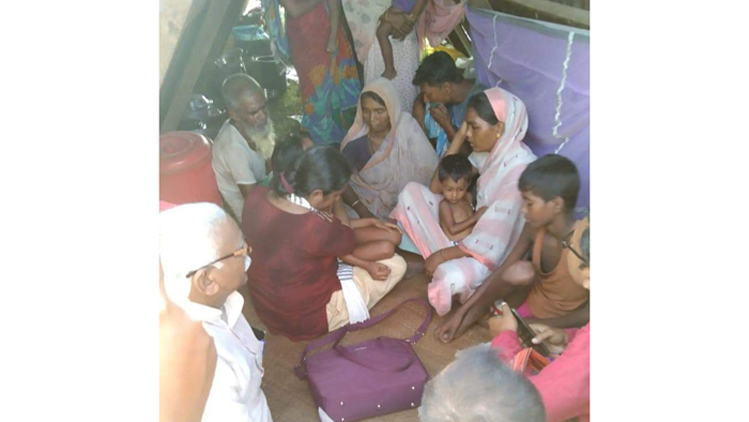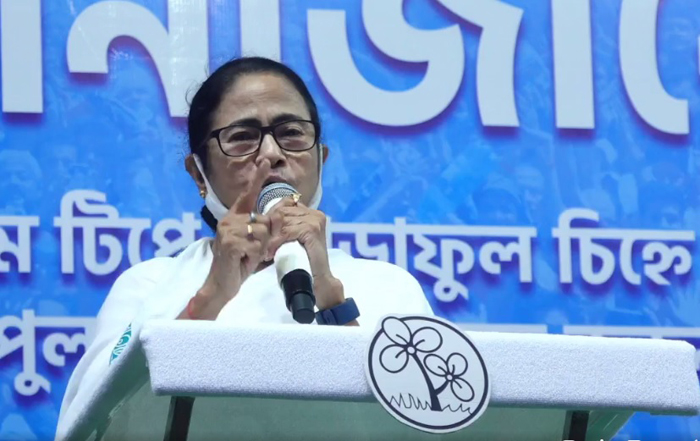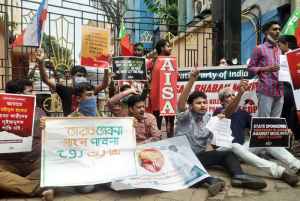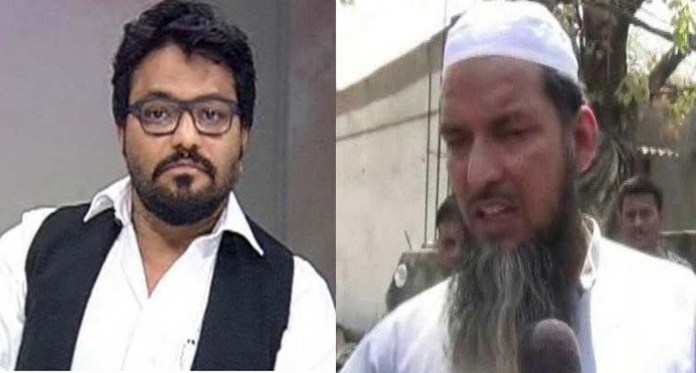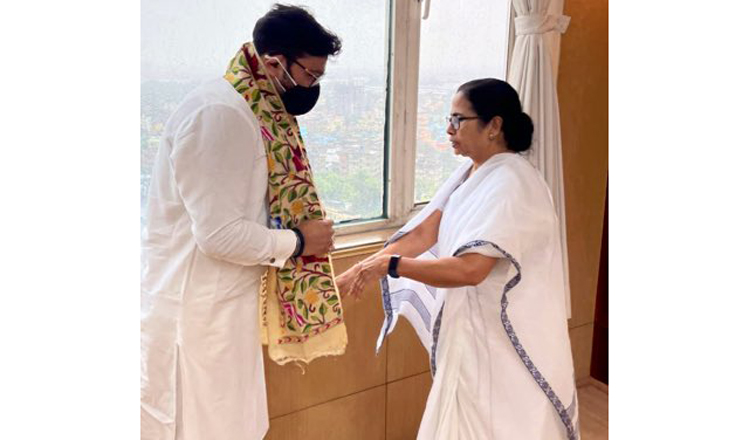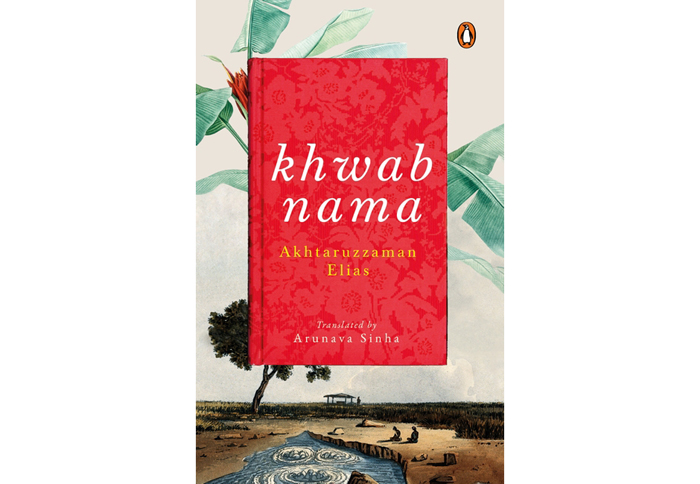Bhopal: A large-scale anti-Muslim violence that rocked parts of the national capital Delhi in February 2020 caused a 96 per cent hike in the cases of communal riots in the country. This is revealed in the data released by the National Crime Records Bureau, (NCRB), the other day.
The overall increase in riots was 50% which includes riots during farmer protests (38%) that began in the latter half of 2020 as well as riots during public protests (33%).
The NCRB recorded 438 communal riot cases in 2019 while in 2020 it went up to 857. The spike is because of the Delhi riots. Delhi Police alone filed 520 communal cases during 2020. More than 50 people, the majority of them Muslims, were killed in the violence that rocked the national capital in the last week of February 2020.
The data shows that Delhi was followed by Bihar where 117 cases of communal violence were recorded. Haryana and Jharkhand reported 51 communal cases each followed by Maharashtra (26) and Gujarat (23).
Notably, no communal violence case was recorded in Uttar Pradesh in 2020, the NCRB report revealed. But UP is the only state that saw an increase in the number of cases (2,217) registered for offences against the state. In 2019, 2,107 such cases were recorded in the state.
Meanwhile, going through the NRCB report-2020 it is revealed that Delhi, among 19 metropolitan cities, is the most unsafe for women. The report states that 40 per cent of all rape cases recorded in the metropolitan cities were reported from Delhi alone. The report says that 25 per cent of all murder cases in metropolitan cities were also from Delhi.
Of the total crimes against women last year, the maximum of 1,11,549 was under the category “cruelty by husband or relatives”, while there were 62,300 cases of kidnapping and abduction also, NCRB records showed.
According to the data, India reported an average of 80 murders daily in 2020, total 29,193 fatalities over the year, with Uttar Pradesh topping the chart among states. This was an increase of one per cent over the total 28,915 murders in 2019, with a daily average of 79 killings during the year, the data showed.
77 women raped every day in India in 2020
According to data released by NCRB, nearly 77 rape cases were reported across India on an average every day in 2020, total 28,046 such incidents during the year.
Overall, 3,71,503 cases of crime against women were reported across the country last year, down from 4,05,326 in 2019 and 3,78,236 in 2018, the NCRB, which functions under the Union home ministry.
Of the total cases of crimes against women in 2020, there were 28,046 incidents of rape involving 28,153 victims, according to the NCRB data for the year, which witnessed COVID-19 outbreak and pandemic-induced lockdowns. Out of the total victims, 25,498 were adults, while 2,655 were below the age of 18 years, it stated.
The number of rape cases, as defined in IPC section 376, stood at 32,033 in 2019, 33,356 in 2018 and 32,559 in 2017. The figure for 2016 was 38,947, according to NCRB data from corresponding years.
Among states and Union Territories, the maximum of 5,310 rape cases were lodge in Rajasthan in 2020, followed by Uttar Pradesh (2,769), Madhya Pradesh (2,339), Maharashtra (2,061) and Assam (1,657).
Besides rape, there were 85,392 cases of “assault to outrage modesty” and 3,741 cases of “attempt to commit rape”, the NCRB data showed. There were 105 cases of acid attack logged across the country during 2020, it added. India also recorded 6,966 cases of dowry deaths with 7,045 victims last year, the data showed.
The state of Madhya Pradesh saw the rape of 45 women every week last year. The NCRB Report reveals this sordid saga about the state that fair sex is in. As far as violation of women goes, Madhya Pradesh is in third place.
A girl falls victim to a rapist every 3 hours in BJP-ruled MP
Meanwhile, the central state of Madhya Pradesh appears to be most unsafe for children (girl child). This conclusion is based on the NCRB report-2020.
As many as 3,259 girls were subjected to rape during the period which means a girl was raped almost every three hours on average. These crimes were registered under section 376 of IPC and sections 4 and 6 of POCSO. MP was followed by Maharashtra which registered 2785 such cases and UP with 2533 cases. As far as the total number of crimes against children is concerned in the state, it witnessed a decline in 2020 as compared to the year 2019 but as far as the crime rate is concerned it was the highest in the country at 59.1. The total number of crimes against children in 2020 stood at 17008 in comparison to 19028 in 2019 and 18992 in 2018. Children were subjected to heinous crimes like murder, murder with rape, abetment of suicide, attempt to murder, infanticide, foeticide, exposure and abandonment among others.
In 2020, as many as 144 children were murdered as per the report. Thus, MP stood third among states as far as the murder of children is concerned. Uttar Pradesh topped the chart with 271 murders while Maharashtra recorded 149 murder cases. Thirteen children were murdered after rape in the state; the second-highest in the country after UP with 30 such cases. Madhya Pradesh again topped the chart of crime with 73 cases as far as abetment of suicide of children is concerned (reported under section 305 of IPC) followed by 59 in Maharashtra and 50 in West Bengal.
But Congress-ruled Rajasthan most unsafe state for women
The data shows that Congress-ruled Rajasthan is the most unsafe state for women as the number of rape cases recorded in the state was 5,997 against 3,065 in Uttar Pradesh and 2,485 in Madhya Pradesh.
The state of Rajasthan is at the top with 5,310 rape cases, followed by the state of Uttar Pradesh with 2,769 cases. In the state of Madhya Pradesh, 2,341 women and girls are raped in the year 2020.
Madhya Pradesh is the 3rd topper in rape cases, according to NCRB-2020. In 2020, as many as 2,341 women and girls were allegedly raped in the state of Madhya Pradesh, according to the report.
In the year 2020, there were rape attempts on as many as 34 women and girls, but they managed to escape from the clutches of the criminals somehow. Out of the 2,341 rapes, 10 girls of age less than 18 years were raped and out of 34 attempted rapes, 11 were minors.
MP 2nd in crimes against elderly
Meanwhile, according to the NCRB data Madhya Pradesh recorded the second-highest number of crimes against senior citizens in 2020. There was a significant rise in cases in the state from 4184 in 2019 to 4602 in 2020.
However, Indore recorded only 95 cases in this category, maintaining a low for the fourth year in a row. Overall, there was a decrease of 10.8% in the crimes against senior citizens in the country as compared to last year.
Indore, however, has remained constant for the past four years. The numbers had started decreasing in the city from 2015. Indore managed to reduce the crimes from 58 in 2016 to 0 in 2017, and then it rose to 114 in 2018 and 100 in 2019, which again reduced to 95 in 2020.
Indore in top 3 metropolitan cities of drug peddlers
Among the 19 metropolitan cities in the state, Indore has witnessed the highest number of assault cases. There have been 2,865 cases of minor assaults registered in 2020, according to the NCRB report.
Besides, the trend of possessing illegal arms in the city is also alarming, as, among the metropolitan cities in the country, Indore has the second-highest number of cases registered under the Arms Act. There have been 1,405 cases of the Arms Act registered with the police, last year. Similarly, the city is among the first three cities in the country, under the metropolitan category, where drug-peddlers have been booked.
Rise in murder cases in MP
The state of Bihar is the topper with 3,195 cases of murder reported in the year 2020. Maharashtra was in the second position in the country with as many as 2,129 people murdered during the year.
Earlier, a special trend was seen in the state of Madhya Pradesh where a drop in the number of murder cases was seen over the past three years. In Madhya Pradesh, in the year 2017, as many as 1,908 people had been murdered; in the year 2018, the number of cases decreased to 1,879; and, in the year 2019, the number dropped to 1,795. But, in the year 2020, the number increased to 2,155 in the pandemic year.
Three murders were reported during a dacoity in Madhya Pradesh in the year 2020. In the state of Chhattisgarh, 17 cases of murder and dacoity were reported and three cases were reported in the state of Maharashtra.
People of the state of Madhya Pradesh are also not far behind in keeping arms. In the year 2020, as many as 12,977 cases under the Arms Act were reported. In Uttar Pradesh, the highest number of 33,578 cases under the Arms Act were reported and, in the state of Rajasthan, 5,199 cases were reported.
Where else MP tops or in second position
Gambling: People of Madhya Pradesh are also gambling enthusiasts; as many as 27,975 cases were registered in the state—the highest in the country. While in Rajasthan, 17,774 cases of gambling were registered; in the state of Gujarat, 17,226 cases of gambling were reported in the year 2020.
Bought for prostitution: As many as 5,431 women became victims of an assault on women with intent to outrage their modesty. Among them 127 were minors. Alarmingly, 24 children were procured for prostitution in the state.
Minors below 12 years: As many as 5,670 children below the age of 12 years were sexually assaulted, sexually harassed and forced into pornography in MP. The state of Uttar Pradesh was at first place with 6,904 cases, followed by Maharashtra (5,756) and Madhya Pradesh (5,670)
Children kidnapped: In the reported year, 3,914 children were assumed to be kidnapped in the state of Madhya Pradesh. Maharashtra was at first place with 3,917 kidnappings and Odisha at third place with 3,666
Shelter home girls: Sick people did not even spare women and girls living in shelter homes of the state. As many as 65 women and girls faced sexual harassment in MP. In Maharashtra, 95 cases were reported and in Gujarat, 63 cases
Sold for prostitution: According to the report, four girls were sold for prostitution in MP, nine in Bihar and two in Gujarat
Cases of mischief: Cases of mischief are also causing problems to the people of the state. People of MP had filed 447 cases at police stations. In Maharashtra, 498 cases were filed and in Tamil Nadu, 227 cases
UP leads in atrocities against SC/St
Meanwhile, Uttar Pradesh tops the list with 10,360 cases followed by Bihar with 7663 cases and MP with 7229 cases of atrocities committed on members of scheduled castes and scheduled tribes. In MP, a total of 509 SC/ST women were raped, including 204 minors. Importantly, 82 were less than 12 years old. As many as 10 girls were kidnapped for marriage and 99 women had faced sexual harassment and 45 of them faced voyeurism in 2020.
Every year, atrocities against SC and ST people are increasing in Madhya Pradesh, says the NCRB report. In 2018, the number was 4,753, which increased to 5,300 in 2019 and it reached 7229 in 2020.
The cases of ‘Promoting Enmity Between Groups’ reported across the country in 2020 were 1,804, while cases recorded under this category for 2019 were 1,058. Tamil Nadu recorded the highest such cases (303) followed by Uttar Pradesh (243).
The UAPA (anti-terror law) cases registered in 2020 also saw a dip compared to 2019. A total of 287 cases were registered in Jammu and Kashmir followed by Manipur (169) and then Jharkhand (86).




